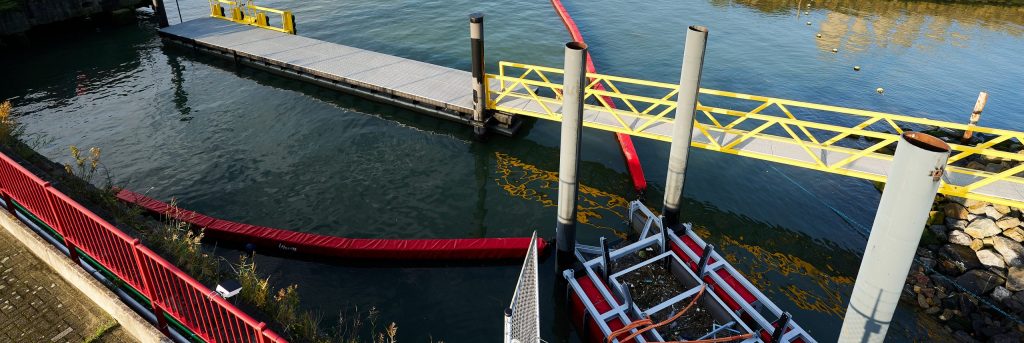General information
| Client | Rijkswaterstaat |
| Project | Catchy |
| Year | 2020 |
| Location | Vijfsluizer harbour, Schiedam, the Netherlands |
| Client | Rijkswaterstaat |
| Project | Catchy |
| Year | 2020 |
| Location | Vijfsluizer harbour, Schiedam, the Netherlands |
Waste, primarily plastic, has become a serious problem for the environment, especially our seas and oceans. Rijkswaterstaat, the Dutch authority for public works and water management, is looking into ways to collect the waste in rivers before it can spread to the sea. For the Nieuwe Maas River in the Netherlands, Rijkswaterstaat commissioned Allseas to develop a waste collection system for the Vijfsluizer harbour, located between the cities Schiedam and Vlaardingen.
The predominant southwest wind drives waste into the Vijfsluizer harbour making it a “hotspot” for (plastic) waste and litter. North of the harbour lies a preserved natural area that is home to wildlife such as seals, marine birds and fish. Allseas is developing a system to catch waste and prevent it from reaching this protected area and the neighbouring North Sea.
The system, named “Catchy”, comprises three elements: two floating booms, a floating frame and collection cage. The floating booms, 200 m and 12 m in length, guide waste under the effect of the wind and currents towards the collection cage. Both booms are equipped with an underwater skirt to catch both surface and submerged waste. The floating frame is secured to piles that allow it to move vertically with the tides. The collection cage is transported to the location where the waste is stored for during sorting and characterisation. At the end of the pilot, the waste was passed on to another party for further analysis.

Allseas’ waste collection system is simple, robust and works entirely on wind and currents to catch waste. The system collects larger (plastic) waste floating on the surface as well as smaller debris in the upper part of the water column.
Catchy was installed in August 2020 in the Vijfsluizer harbour where it remained for one year, the duration of the pilot project. In addition to the development and installation of the system, Allseas will analyse the collected waste to provide Rijkswaterstaat with information on the types and amounts of plastics and recommendations for sustainable and cost-effective post-processing possibilities. After this year, Catchy was renovated, and as of February 2023 re-installed.
Read more about Allseas’ river waste removal project.
Read more on the website of Rijkswaterstaat. Information in Dutch only.
LIFE SouPLess
The development of Catchy is part of the LIFE SouPLess project – Sustainable riverine PLastic removal and management, made possible through funding from the LIFE programme of the European Union. Catchy adheres to the objectives of the SouPLess project while answering relevant questions about its efficiency and prospects to be upscaled on more Dutch rivers.
An overview of the objectives, approach and achieved results in the LIFE SouPLess framework is available on the dedicated webpage of the project.